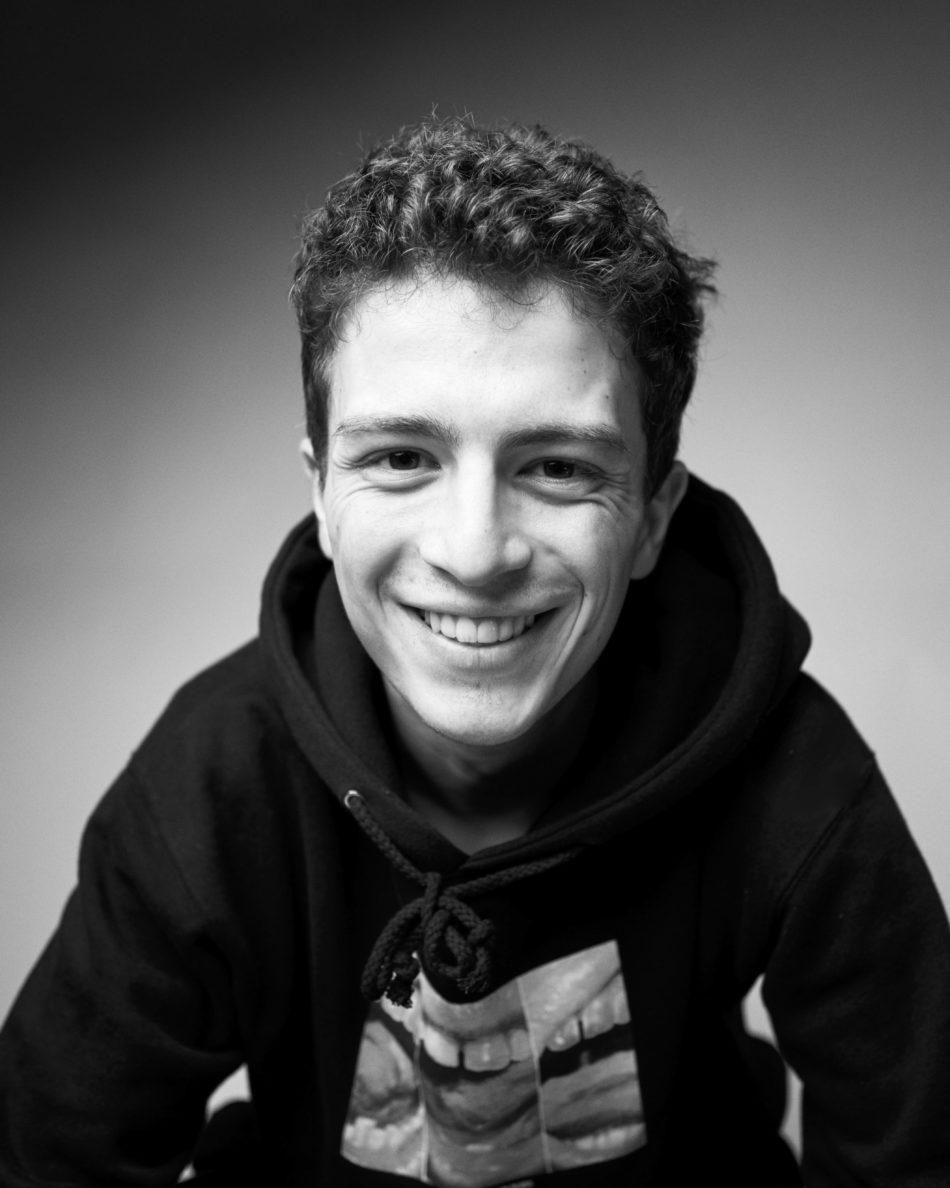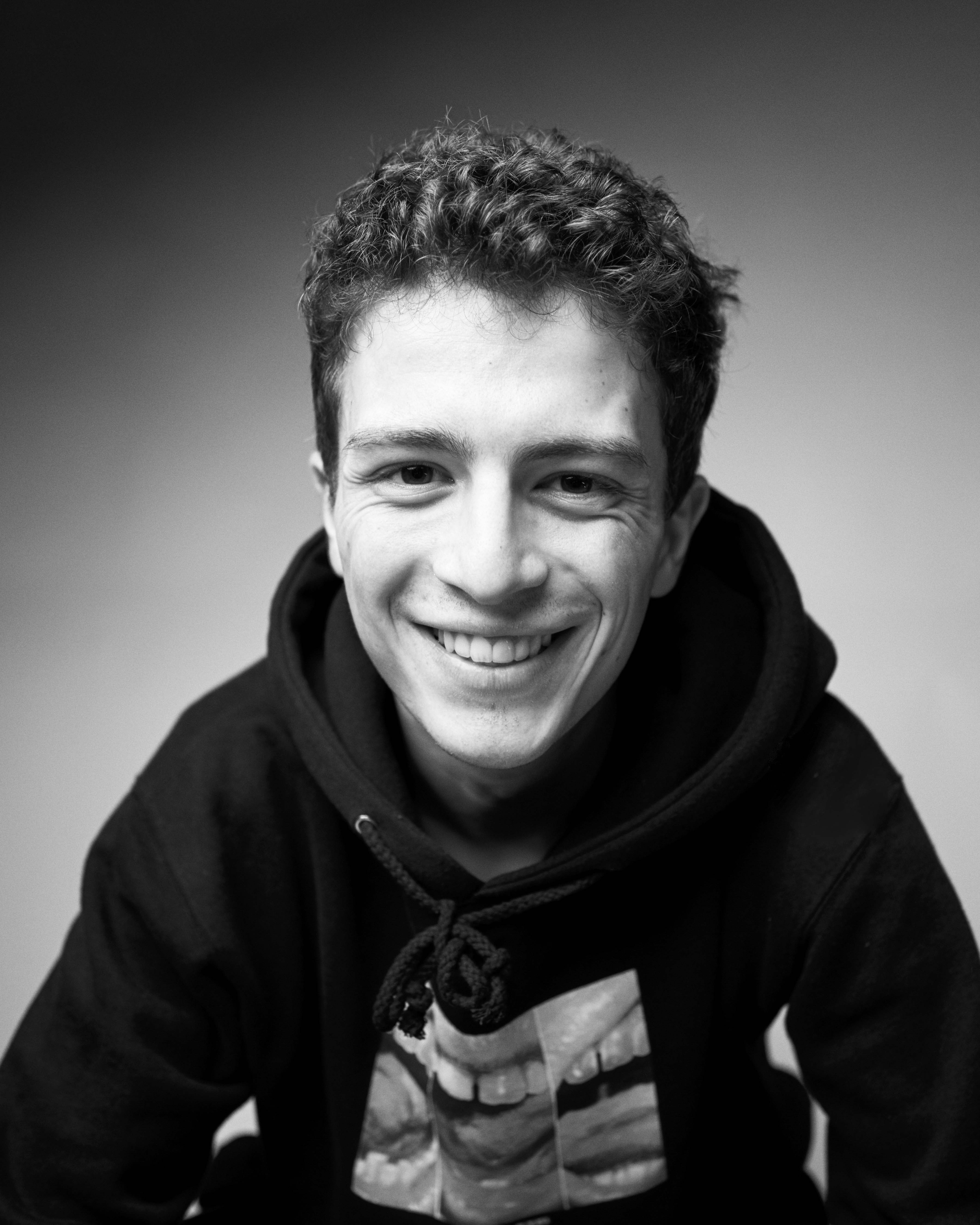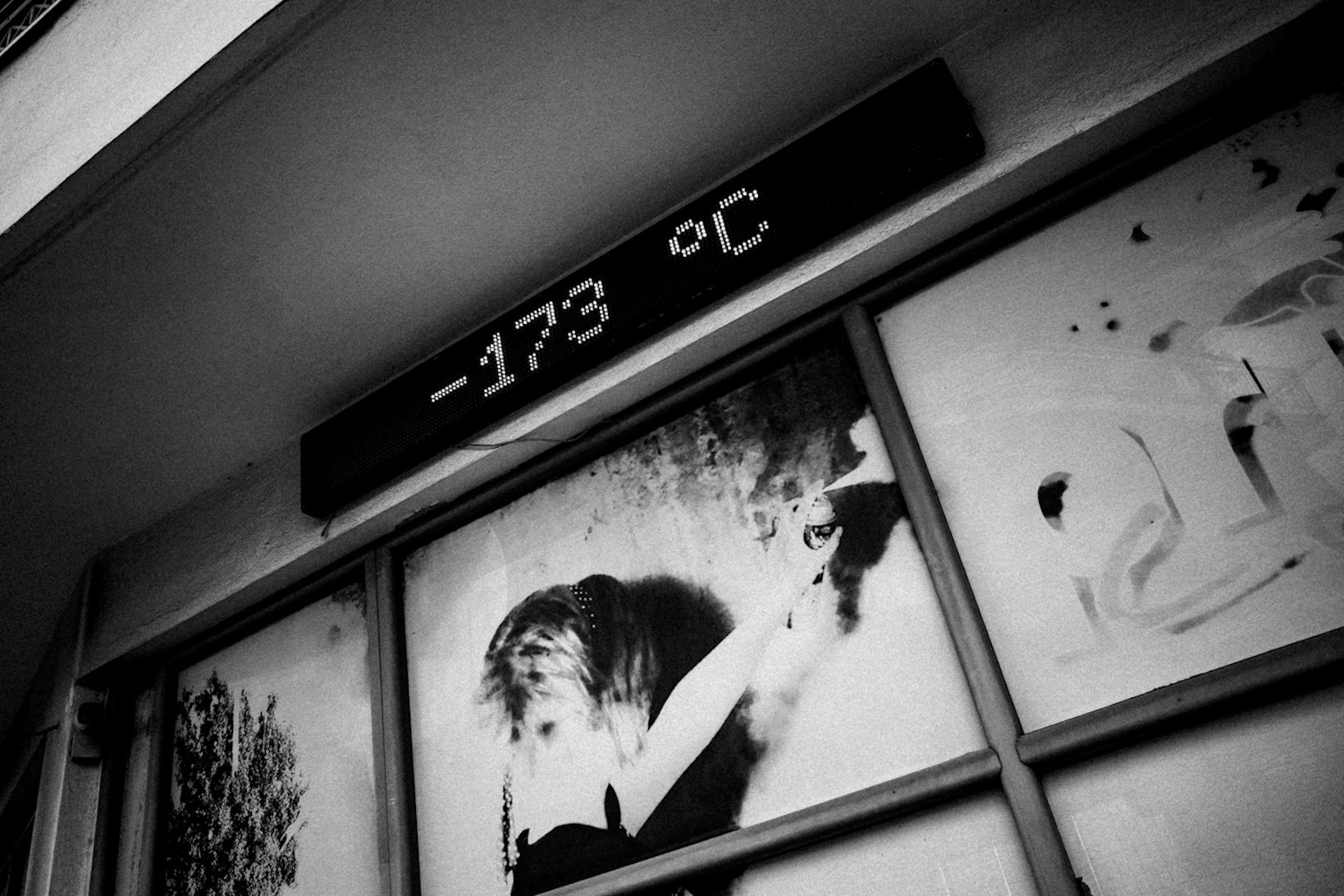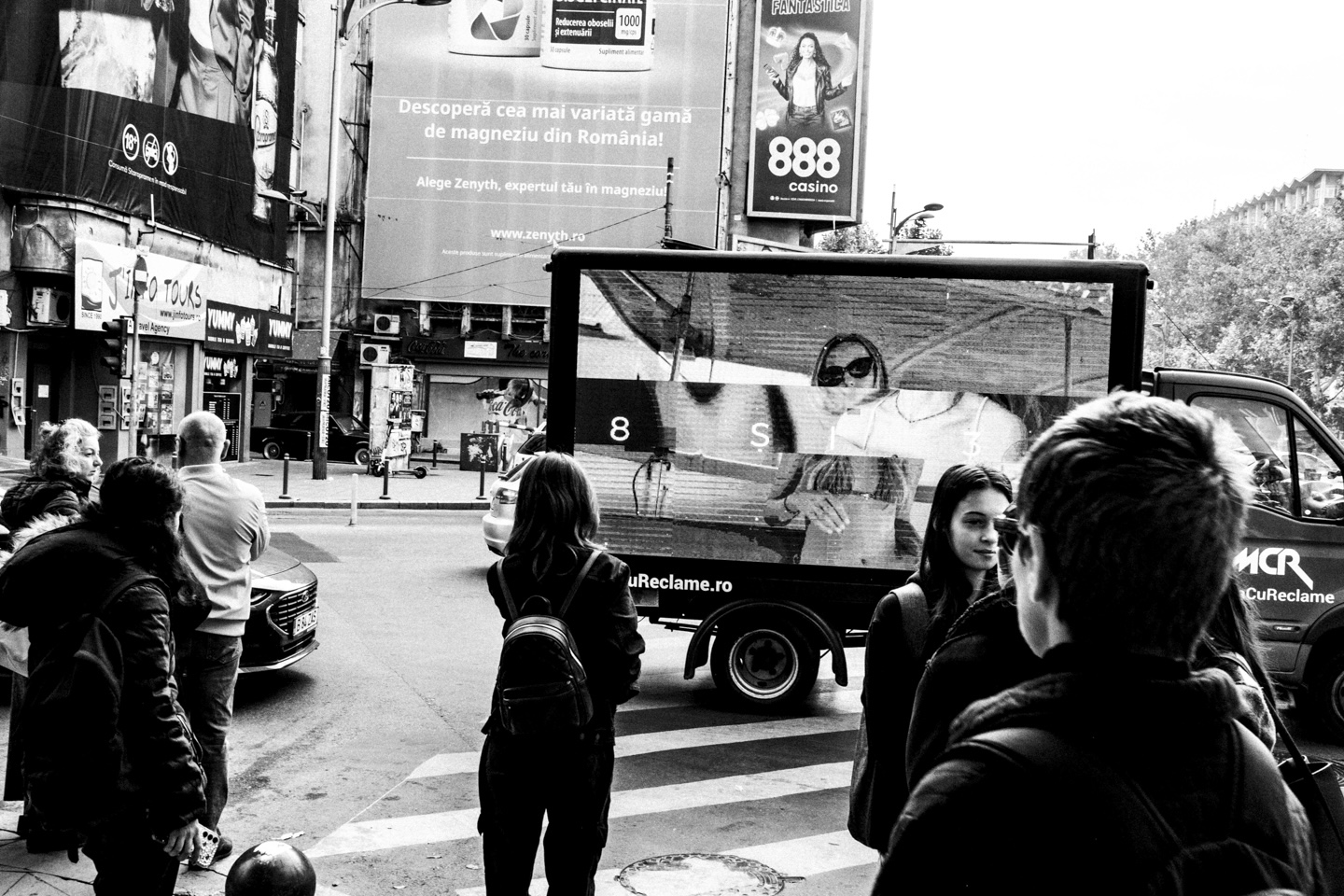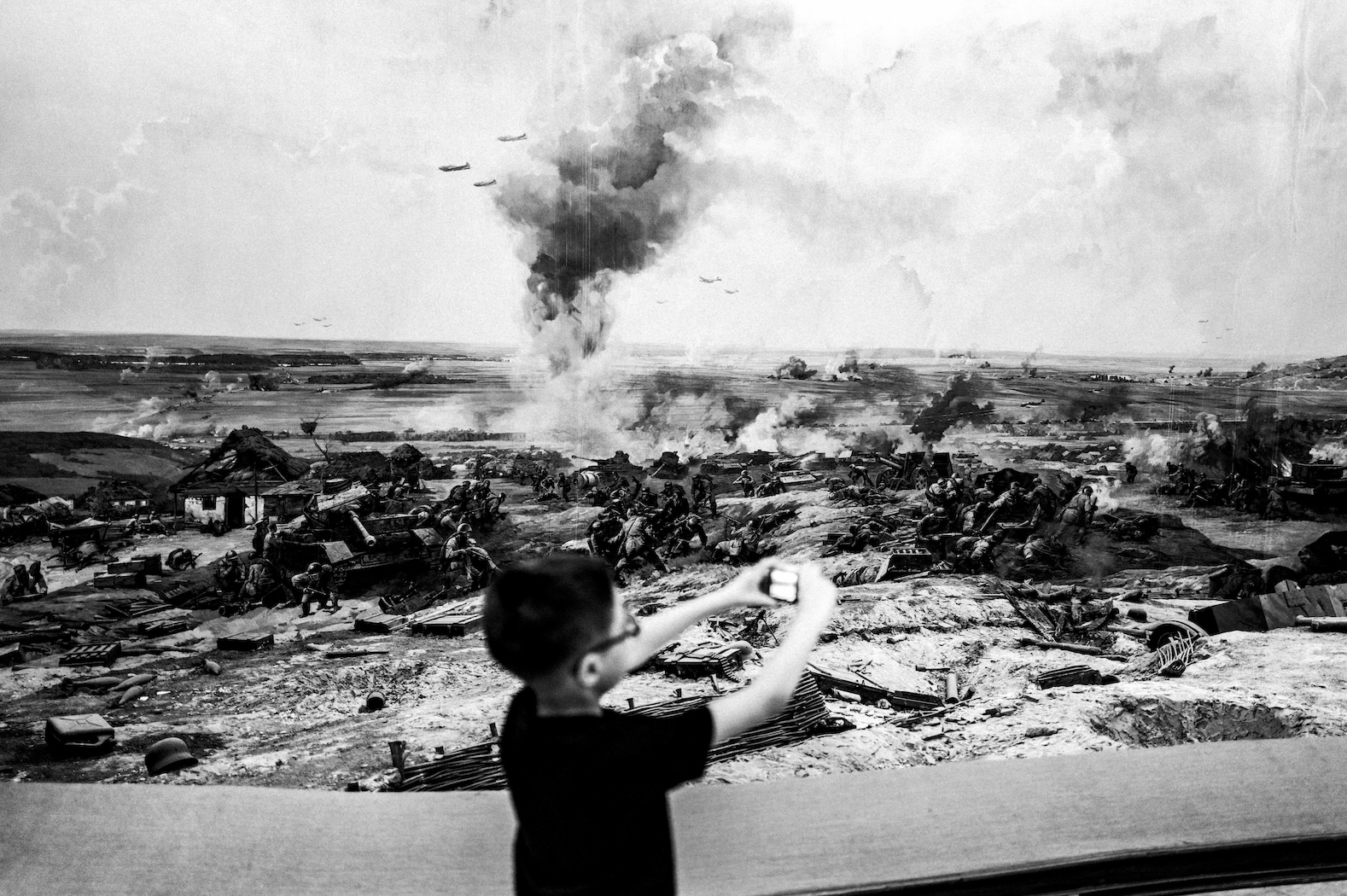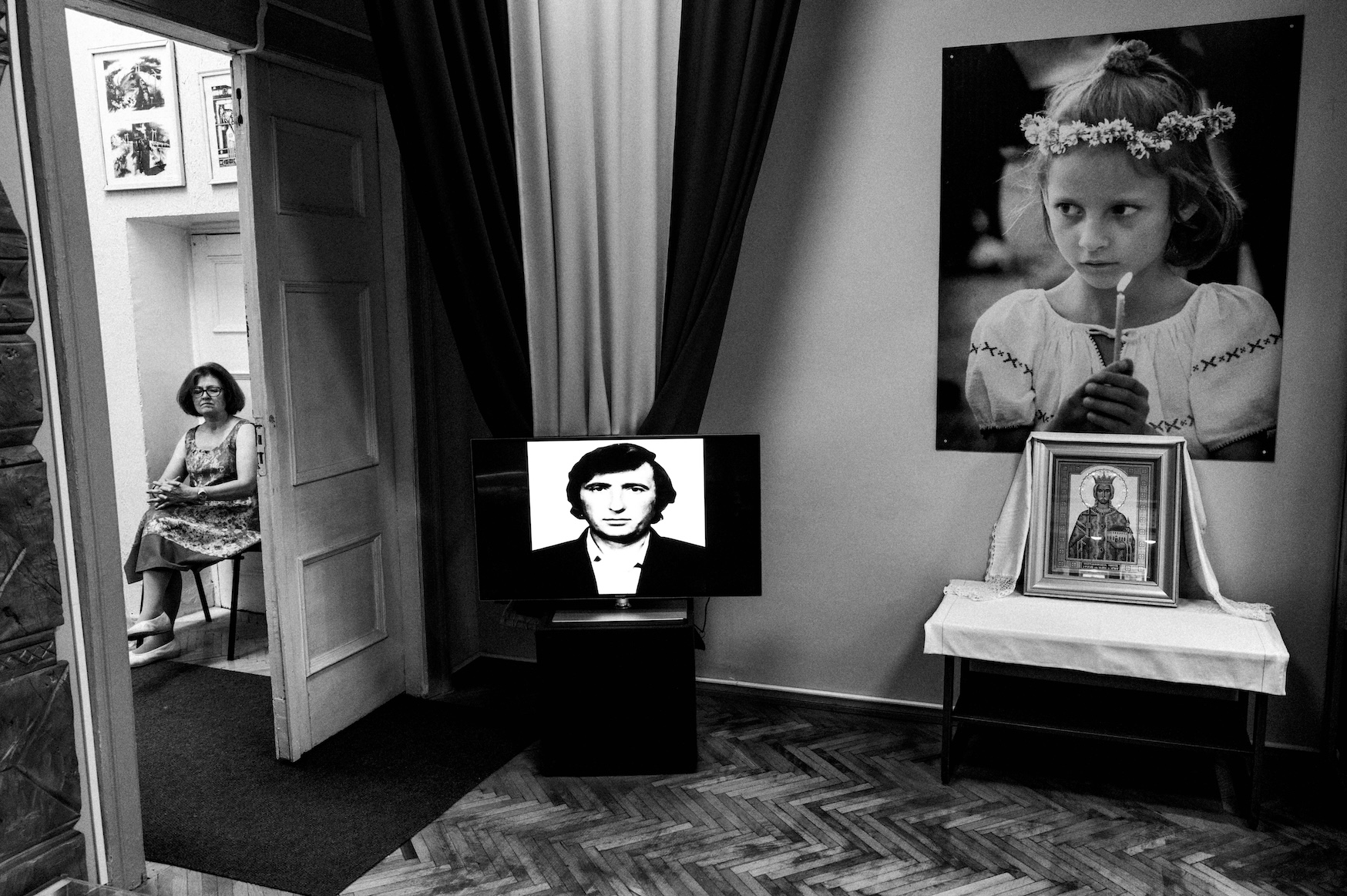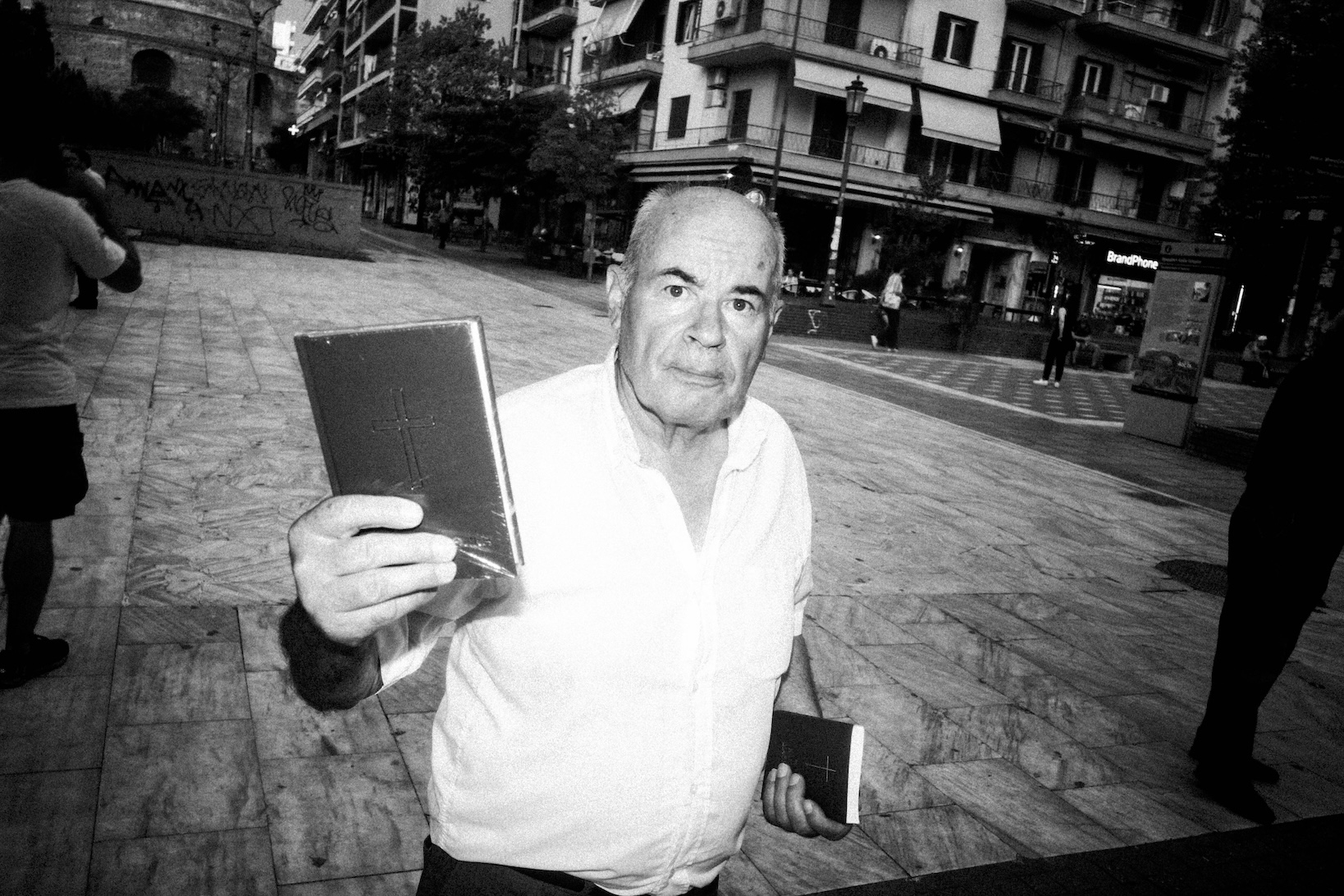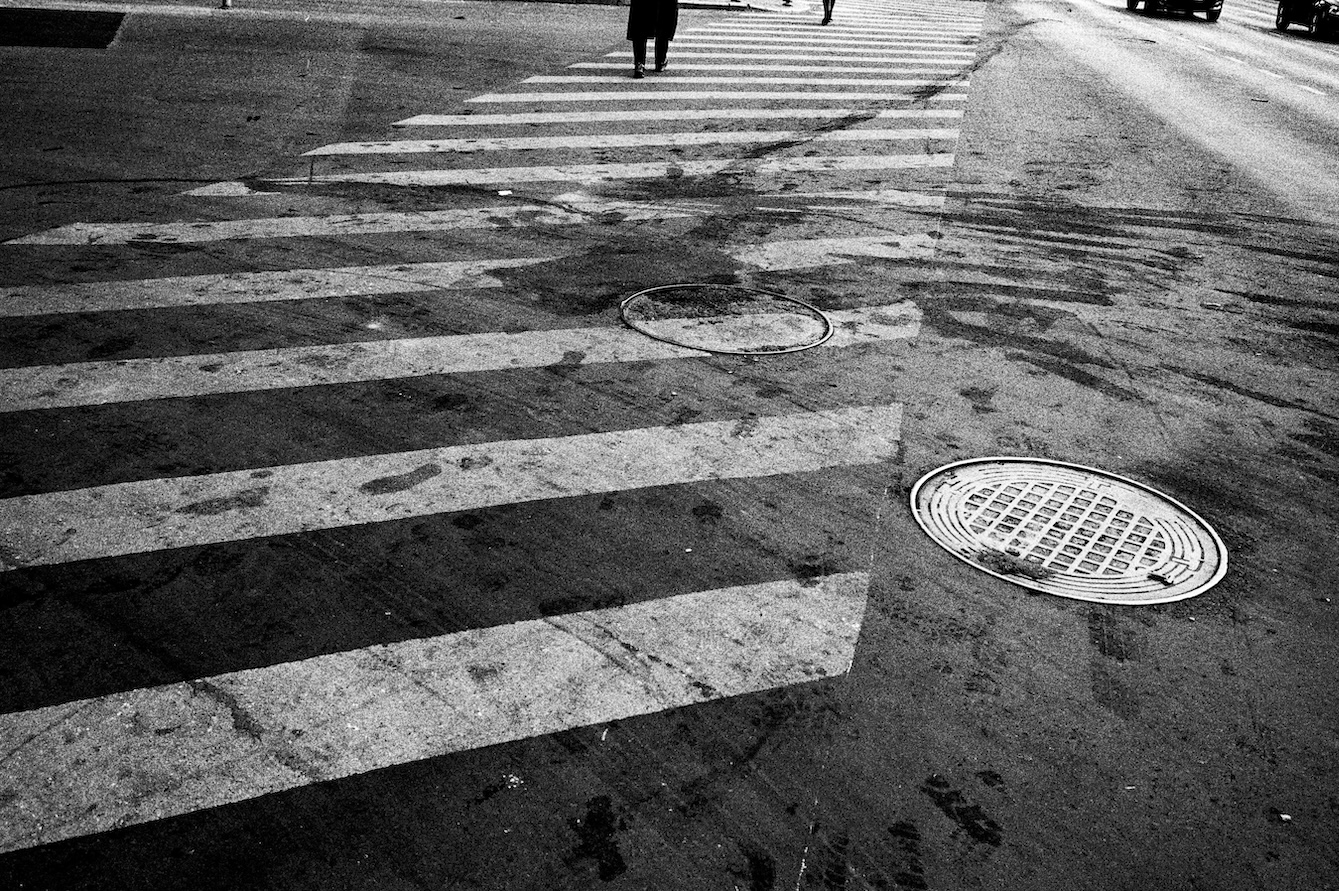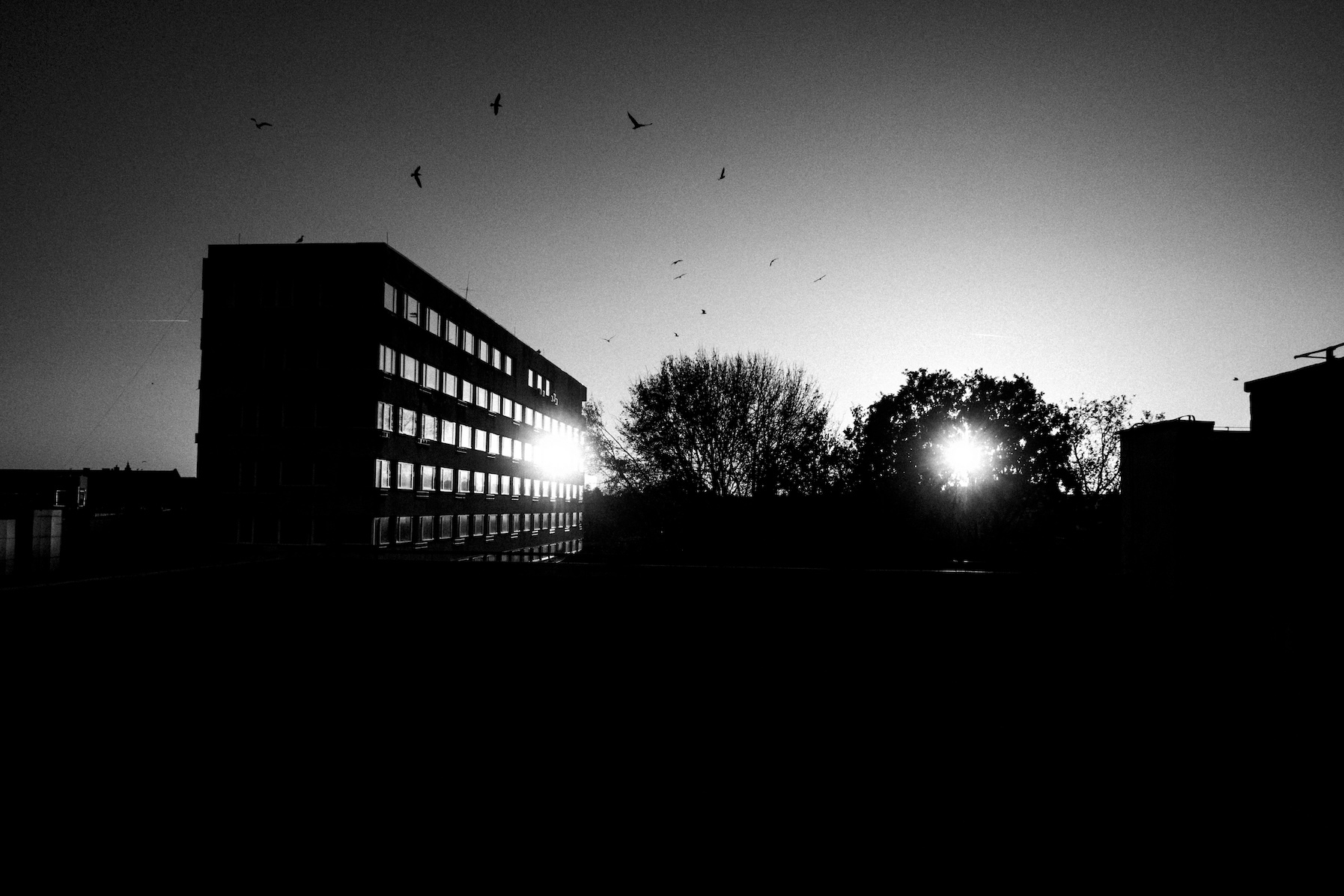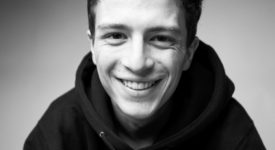In May 2025, Photo London will celebrate its 10th anniversary with a special edition dedicated to London and its rich photographic heritage. The Fair returns to Somerset House- marking its own 25th year as a global arts hub- from 15 to 18 May (Preview on 14 May). As always, it will bring together many of the world’s leading galleries and photographers to showcase the finest in photography and explore the future potential of the medium.
Among the photographers featured in this extraordinary event is the young Romanian artist Toma Hurduc, who kindly agreed to answer the questions in this interview.
Toma Hurduc (b. 2001, Romania) is a documentary photographer currently based in Bucharest. His early work focused on capturing local underground communities and movements to which he feels a strong personal connection. Today, his visual narratives often intertwine lived experience with imagined or symbolic elements, blending factual truth with a more abstract, conceptual layer. Through this approach, he seeks to explore human perceptions of reality, fear, anxiety, impermanence, and the nature of memory.
Toma holds a degree in Cinematography from the National University of Theatre and Film “I.L. Caragiale” in Bucharest. Deeply drawn to the expressive power of light and its role in image-making, he frequently works with 35mm black-and-white film and experiments with various printing and display techniques to evoke a sense of the uncanny.
His work has been exhibited both in solo and group shows in Romania (Centrul de Resurse în Fotografie, Common House, Piua Studio), France (IKEA+, 28 Rue de Lappe, Paris), and Norway (Nitja Centre for Contemporary Art). He has also participated in several mentorship programs, the most recent being with Annie Leibovitz.
Toma’s photography has been featured in Romanian publications including Scena9, PressOne, Vice Romania, and Glamour. He has led workshops with Leica Camera Austria and Ilford Photo and currently teaches at the Centrul de Resurse în Fotografie in Bucharest. As of 2025, he is a member of Futures Photographers.
Alice Năstase Buciuta: Toma, what schools did you attend, and how did they contribute to developing and refining your talent for capturing the world through photography in such a lasting and evocative way?
Toma Hurduc: I got my BA in Cinematography in 2023, after attending the National University of Theatre and Film “I.L. Caragiale,” and now, in order to get into academia, I will enroll in an Anthropology MA this year.
While school played an important role in shaping me as an artist, it could only do so much. My biggest takeaway from university is the rather vast technical knowledge I gained. Knowing all the brushes and how to hold them is key when you wish to paint a picture. School has also connected me with peers that turned from classmates to work colleagues. I think the only way of being successful after art school is to make the most out of the connections you made while studying. Being nice and easy to work with always does more than being a jackass, however talented you are.
However, most of the learning was done outside of school. I owe a lot of my practice to the late Dan Beșliu, who introduced me to the idea of being present with your camera. I learned the basics from him when I was only 13, way too young to ask the real, important questions.
I was lucky enough later to find people who had the patience to talk to me and share their knowledge, hours on end. And for that, I want to thank Dragoș Boldea, Cosmin Bumbuț, Mihai Stoica, Sorin Florea, Ana Drăghici, and Alexandru Sterian. Cheers to them!
Marea Dragoste- revistatango.ro: Did you always see photography as a potential profession, or did it begin as a passionate hobby? How do you balance these two perspectives now?
Toma Hurduc: I sometimes fantasize about doing photography just as a hobby, while working in a connected creative field, like advertising. But I know it would be impossible, as I’ve tried it before.
I am too impulsive and obsessive, perhaps because this was pretty much the only thing I was actually ever good at – above average, to say. When I found the thing that could make me “the cool kid,” I never wanted to let it go. The real need for photography came into my life later than the age of 13, when I learned the basics. At around 16 or 17, when everybody around me was either good at skating, doing graffiti, DJ-ing, or just super smart, I found one thing nobody else around me was doing. So I became that kid, appreciated and wanted for that.
This has translated into my current work, as I still am super impulsive. Inspiration hits at random, even though I spend the majority of the time I am not working commercially on the streets, photographing. I cannot imagine not being able to do what I feel like doing, whenever I feel like doing so. I chose freelancing for this exact reason, and this freedom is the only thing outweighing 18-hour workdays, late payments, and financial unpredictability.
I am fortunate enough to be earning my living from my most beloved preoccupations—photography and cinematography. I don’t do much outside of those because they take up my work time, my free time, and everything else. The only other things I do are read and go out with friends.
Marea Dragoste- revistatango.ro: Is there someone in your family from whom you believe you’ve inherited your keen eye for beauty? How important do you think one’s family background and home environment—beyond formal education—are in shaping an artist?
Toma Hurduc: Absolutely, family is extremely important. And I got the best of luck, in this case. While not being rich or influential in the art world, my family showed me this joy of seeing.
Every grandparent of mine was into arts. My father’s mother was a canto professor. She also travelled the world until very late and squeezed every second of it. I always tell her that this fascinates me the most about her, the ability to have this child-like curiosity and find joy everywhere, everyday. My other grandmother used to read me a lot. I remember sitting in a dimly lit room, looking at the ceiling and imagining the stories unfold, just like on a projection screen, and she encouraged me to do that.
My parents had the most impact on this, however. I wanted to do photography to get closer to my father, as he is also into it. My mother really liked reading about it. While I was never the kid with the most top-of-the-line camera, I had something even better, which was the support of both of my parents. They quickly understood that this is the only path I could pursue happily and so they believed in me through all the steps. And now I know they’re happy. It feels like any win I have is a way of giving them back something. I know this is a big risk for a parent, allowing his own kid to play around with such a ‘’risky’’ job. We always hear concerned parents asking their children how will they be able to make money from art? It isn’t that complicated, though, if the kid was raised responsible enough to understand that before pursuing any career, they need to be a functional adult, taking care of their own self. That way, you start being preoccupied with the business part of art, which is there and we can’t ignore it.
I met great artists from my generation and most don’t have artist parents. However, discussing with those people about this topic brought up that sort of curiosity I was talking about above earlier. I feel like a parent’s duty when they have a child who is drawn to arts isn’t necessarily just about exposing them to art. The most important a parent can do is to nurture the kid’s human skills, like perseverance, resilience, acceptance of failure, all of these things that young (and old, alike) artists face everyday. Doing art is, for me, a mental game, and I cannot be more thankful that the chain of events in my life helped me understand how to manage my emotions and how to speculate them artistically.
Marea Dragoste- revistatango.ro: What are the essential joys and personal rewards you’ve discovered through your dedication to the art of photography?
Toma Hurduc: Of course, anybody working with photography will get excited when they obtain that picture.
However, my biggest satisfaction with photography is interacting with people. My practice revolves around people, especially strangers in fleeing encounters. Something that I came across when I started doing graffiti; it was this rush of adrenaline, not knowing how a stranger would react to my doings. It is also this almost performative part of photography that keeps me entertained. That and just meeting people I would’ve never met, just because I happened to carry a camera in the right place, and the right time. Photography – especially street photography- feels like an exchange for me. It has something flirty and dancy in it, it’s weird.
As Meyerowitz put it better than I could’ve, there is this pleasure of seeing, which I think should be the basis for any photographer out there. Good, intimate images appeared on the street in front of me only when I stopped chasing and started playing, with imagination, curiosity, and discovery.
The other side of my photography has also taken me to places I only could’ve wished to go to. For example, I recently had an assignment to photograph Romanian underground legends Partizan. Being able to meet these people that I admired and spend two afternoons with them, in their rehearsal room intimacy, essentialy just because I am a guy with a camera, is incredible to me. I have worked on assignments in such various locations and scenarios and I love this type of work, as it forces me to meet people I wouldn’t normally meet.
Photography and the camera are just excuses to see. I cannot justify in any other way. I don’t know of any other craft that connects you more to your surroundings. If such thing comes up, I am ditching the camera right away.
Marea Dragoste- revistatango.ro: What other values do you hold dear as a young person living in Romania today?
Toma Hurduc: The sense of community. With inevitable, blatant, ugly fascism knocking on our door harder and harder, we’re right between that and hyper-capitalism. This is, essentially, the subject of Two Suns, my ongoing photographic projects about the Balkan area, exhibited in Bucharest, Oslo and now, London.
Meeting with your friends in a basement to attend a small concert, going out for a drink at the local garden. It is these things that I prioritize in life and this is another reason why I try so hard to not be employed anywhere else. This type of quality, intimate time with your peers is the thing that is keeping me going. I’m really not interested in cars or homes, I would rather live a simpler life but in which I know I could spend time anytime with my peers.
I also love travelling and, through my work, I have made a network of people abroad. Recently, I spent 10 days in Budapest, in a new friend group which assimilated me right in. It’s this type of connection, of camaraderie, that I value above anything.
Marea Dragoste- revistatango.ro: What other significant photography competitions have you successfully participated in so far?
There are few competitions I actually value and I am not at their level yet. That time will come, surely. I see most of these online competitions as papier-mache: they don’t really mean anything to actual artists, they’re cool for people chasing likes and money.
What I care about and apply to however are mentorships, residencies, and grants. It’s not the accolades that drive someone’s body of work forward but the resources, feedback, and educational opportunities that do. This is what I concentrate my attention to. For example, recently I was fortunate to be nominated as a member of Futures. This is, for me, quite the most important thing that has happened lately. Just being able to be in touch with like minded young photographers and most importantly, being able to access free, deeply insightful education and most importantly, exclusive happenings like talks and lectures that this programme provides is incredible.
It’s some sort of nuanced learning that you need to do from a certain point in your career that artists should look into, rather than cardboard awards. The real, important awards are the acknowledgements of your merit which are translated into learning opportunities. Fame and popularity are endless but quality education is scarce, especially with the over-pollution of information on the internet. Meeting and spending quality, personal time with photographers (in person) like Nikos Economopoulos and Annie Leibovitz or (online) like Matt Black or receiving tailored feedback and being presented with opportunities by editors and curators in portfolio reviews will never, ever, be outweighed by some gold thingy.
Marea Dragoste- revistatango.ro: You are now taking part in the 10th anniversary edition of Photo London, a major international photography event, where your works will be exhibited alongside those of other talented artists from around the world. Could you walk us through the journey—both the artistic and logistical steps—that led to this important moment? How challenging, costly, or demanding is it for a young photographer to take part in such a large-scale project?
Toma Hurduc: It’s work work work work work and then it’s just chance, there is no personal merit in that. The only merit is relentlessness.
I like to think that everything that has happened for me was just because I wished for it hard enough, almost like a kid does. I always tell this to younger (huh, stupid to hear this from someone who’s 23 years old): if you wish hard enough for something, it will appear. Of course, it won’t happen magically. However, something up there will orchestrate things in such a way so that you receive according to the preoccupation you initially put in.
As Dan Beșliu used to say, photography hurts, costs money and takes time. This is applicable if you wish to engage with it long term, in a profound and personal journey, not only to make a quick buck or become internet viral. And I think this was the saying that kept me alive – as it is especially true in street photography. You can be out and about for days until that image pops up in front of you. That image, which is just a translation of what is in your head. It was only when I realised that I am working with internal stimuli rather than external encounters when doing street photography, that I understood the pace, rhythm, and joy of my craft. Photography is much more of a hunter-prey game than other art forms – inspiration can strike but the subject may not be there. In music, if there’s something playing in your head, you can go and write it down. In photography, subjects like to tease you and test you by showing up when they want, not when you want. Being permanently in touch with your photographic interest is the only way of doing it sustainably.
Being out and photographing became much more about the monologue in my head rather than clicking a button, and that’s when I fell in love again with the medium.
I feel that photography – and art, in general- can only be sustainable for an artist when they keep finding new meaning in it, that’s why I believe that photography takes time. You constantly have to question your practice and poke at it through the fence with a stick, rather than chase a recipe that seems to be working.
I don’t work with steps or goals, I feel that is limiting. My way of doing is very much like spitting in the wind and hoping for the best, as I try to avoid being too systematic. Sure, there is some order, there is discipline – which is, perhaps, the thing – but I avoid setting goals. I want to go as far as I can and only look back when I’m old and I cannot go further.
Marea Dragoste- revistatango.ro: What is the core message or theme of the photographs you will be exhibiting at Somerset House between 15 and 18 May 2025?
Toma Hurduc: The images exhibited are part of my ongoing documentary project, Two Suns. Through this work, I explore how people can become so overwhelmed by the chaos of their surroundings that the looming sense of apocalypse creeps in unnoticed. My portrayal of the urban landscape reflects how individuals are constantly exposed to a flood of images and distorted realities, creating a feeling that the end is inevitable—even when no clear signs are present.
This project focuses on socio-economic issues in the Balkan countries, capturing what I describe as a sense of “crowded solitude” within the disarray of urban life, all while weaving in a subtle undercurrent of impending collapse. I began working on Two Suns in 2023, photographing in Albania, Romania, Greece, and the Republic of Moldova. My aim has been to document this locally-rooted yet universally resonant experience—life imagined in those suspended moments just before disaster strikes.
Marea Dragoste- revistatango.ro: As a young person navigating today’s turbulent world—and as an emerging artist—how important is it for you to be actively engaged in society and its evolution toward the future?
Toma Hurduc: Art is political, and an artist’s voice cannot be apolitical. Otherwise, it’s just shallow eye candy. We humans all have civic duties. It is our responsibility to take care of them. As artists, I think we have it easier, as we can problematize, question, and address certain social topics in our artistic practice—we have this excuse. However, I am quite disappointed with the people of my generation who choose not to get involved. It is highly disrespectful to our predecessors who fought to gain the right to speak. This is, as even the election vote demographic chart shows, the main reason for the growth of fascist ideologies in Romania. Fascism is brewed by indifference and has grown into something that should alarm even the most ignorant of the bunch.
Things will never take a turn for the better if people don’t become conscious of the role of the citizen in the political landscape. The population shouldn’t be the sand that the political wave washes away, but the stone wall that makes it bounce back. If the educational system fails to teach us our role in society as citizens, we should inform ourselves and our peers. We have power only if we’re disruptive. It has been popularly accepted that Romania is doomed and we can’t do anything to help it. Of course, it can be this way if we think of phantasmagorical, large-scale change right off the bat. Instead, the real change is what we can do individually—by not accepting humiliation, highlighting unlawfulness, signaling corruption, and not letting uncultured opportunists trample us. By standing for our own rights, exercising our civil power, writing about injustice, and taking verbal and/or physical action when something or someone is in danger.
The fight for equity and equality is now against fascism. Anybody who is not doing everything they can to prevent this situation is actively supporting oppression.

